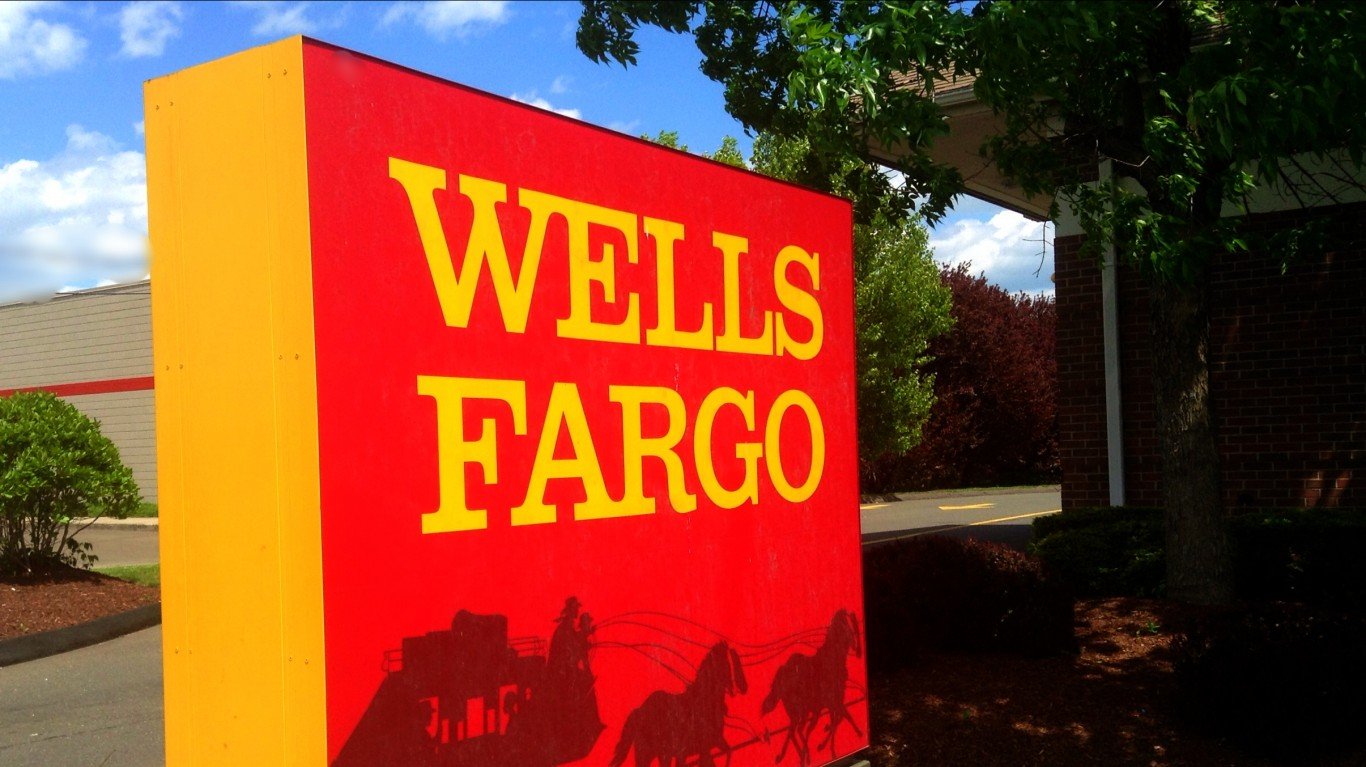

The three major U.S. equity indexes closed lower again Tuesday. The Dow Jones industrials closed down 0.6%, the S&P 500 dropped 0.92% and the Nasdaq shed 0.95%. All 11 S&P sectors closed lower. Energy (down 1.9%) and tech (down 1.4%) took the biggest hits. Wednesday morning’s report on the consumer price index (CPI) came in worse than economists had predicted. CPI rose 1.3% month over month and 9.1% year over year. Following the report, all three major indexes sank in Wednesday’s premarket session.
[in-text-ad]
Before markets opened on Tuesday, Delta Air Lines released a mixed report for its second quarter. The airline missed the earnings per share (EPS) estimate but beat on sales. The stock traded up about 0.7% in Wednesday’s premarket.
Fastenal beat estimates on both the top and bottom lines, but the increases were small. Reported EPS was a penny better than estimates, and revenue beat estimates of $1.77 billion by less than $6 million. Shares traded down about 6% in premarket action.
The June-quarter earnings season gets rolling Thursday morning with several notable earnings reports. We already have previewed analysts’ expectations for Conagra, Ericsson, JPMorgan, Morgan Stanley and Taiwan Semiconductor.
Here is a look at four companies on deck to report quarterly results first thing Friday morning.
Citigroup
Shares of Citigroup Inc. (NYSE: C) have dropped about 30% over the past 12 months. The stock posted its 52-week low a week ago, after hovering around that level for the past few weeks. Of the nation’s half-dozen largest banks, Citi has put up the biggest share price losses over the past year.
While Citi’s second-quarter trading revenue is expected to rise, consumers’ worries about inflation could hit credit card spending. Combined profits at the six largest banks are expected to be 10% lower sequentially and down 35% year over year.
Analysts seem to be content to wait on the sidelines. Of 25 brokerages covering the company, 12 have a Hold rating on the shares, and 12 have a Buy or Strong Buy rating. At a recent share price of around $46.10, the upside potential based on a median price target of $58.00 is 25.8%. At the high price target of $81.00, the upside potential is 75.7%.
Second-quarter revenue is forecast at $18.29 billion, which would be down 4.7% sequentially and up 4.7% year over year. Adjusted EPS are forecast at $1.65, down 18.2% sequentially and nearly 42% lower year over year. For the full 2022 fiscal year, analysts are currently forecasting EPS of $6.74, down 33.5%, on revenue of $73.24 billion, up 1.9%.
Citigroup stock trades at 6.8 times expected 2022 EPS, 6.8 times estimated 2023 earnings of $6.81 and 6.0 times estimated 2024 earnings of $7.74. The stock’s 52-week range is $44.93 to $74.64, and Citi pays an annual dividend of $2.04 (yield of 4.42%). The total return to shareholders for the past year was negative 31.4%.
UnitedHealth
The country’s largest health insurer, UnitedHealth Group Inc. (NYSE: UNH), has posted a share price increase of about 26.5% over the past 12 months. Since a recent low in mid-June, the shares have added about 13.8% as investors have sought refuge from inflation in health care stocks generally. Over the past 12 months, the health care sector has traded essentially unchanged, while the S&P 500 is down 12.6%. UnitedHealth’s 12-month share price increase trails only Chevron among the Dow stocks.
[in-text-ad]
Analysts remain strongly bullish on the stock, with 21 of 24 assigning a rating of Buy or Strong Buy and four more rating the shares at Hold. At a share price of around $514.40, the upside potential based on a median price target of $578.50 is about 12.5%%. At the high target of $632.00, the upside potential is 22.9%.
The consensus estimate for second-quarter revenue is $79.68 billion, down 0.6% sequentially but up by 11.7% year over year. Adjusted EPS are tabbed at $5.21, down 5.1% sequentially and up about 9.8% year over year. For full fiscal 2022, analysts are forecasting EPS of $21.69, up 14.1%, on revenue of $320.46 billion, up 11.4%.
UnitedHealth stock trades at 23.7 times expected 2022 EPS, 20.8 times estimated 2023 earnings of $24.77 and 18.2 times estimated 2024 earnings of $28.25 per share. The stock’s 52-week range is $383.12 to $553.29. UnitedHealth pays an annual dividend of $5.80 (yield of 1.28%). Total shareholder return for the past 12 months was 25.3%.
U.S. Bancorp
U.S. Bancorp (NYSE: USB) is the country’s largest regional bank (seventh-largest overall) and operates more than 2,200 locations in the West and Midwest. The bank’s share price has dropped by more than 16% over the past 12 months and the stock posted its 52-week low a month ago.
U.S. Bancorp stock is among the 10 largest holdings in Warren Buffett’s portfolio, one of three financial services companies in the group. Bank of America and American Express are the other two, ranking second and third behind Apple as the portfolio’s largest holdings.
Analysts have adopted a wait-and-see attitude, with 14 of 24 giving the stock a Hold rating with another nine assigning Buy or Strong Buy ratings. At a share price of around $46.20, the upside potential based on a median price target of $55.50 is 20.1%. At the high target of $66.00, the upside potential is 42.9%.
The consensus second-quarter revenue estimate is $5.89 billion, up 5.8% sequentially and by 2.3% year over year. Adjusted EPS are estimated to come in at $1.07, up about 7.8% sequentially and down 16.4% year over year. Analysts are looking for full-year revenue of $24.61 billion, up 8.3%, and EPS of $4.30, down 15.7%.
[in-text-ad]
The stock trades at 10.8 times expected 2022 EPS, 9.0 times estimated 2023 earnings of $5.16 and 8.3 times estimated 2024 earnings of $5.55 per share. The stock’s 52-week range is $44.79 to $63.57. U.S. Bank pays an annual dividend of $1.80 (yield of 3.98%). Total return for the past year was negative 17%.
Wells Fargo
Wells Fargo & Co. (NYSE: WFC) is the nation’s third-largest bank (measured by market cap), and its share price has dipped by about 8.2% over the past 12 months. The bank just dodged a bullet in the form of hundreds of millions of dollars in potential damages sought in two lawsuits. A federal judge in Manhattan tossed out one case and sharply limited a second.
The largest overhang for Wells Fargo remains the Fed’s asset cap prohibiting the bank from expanding its balance sheet until it cleans up regulatory issues related to the 2016 phony accounts scandal.
Analysts remain bullish about Wells Fargo. Of 26 brokerages covering the bank, six have a Hold rating and 20 have a Buy or Strong Buy ratings. At a price of around $39.60 per share, the upside potential based on a median price target of $54.50 is 37.6%. At the high price target of $67.00, the upside potential is about 69%.
Analysts are expecting second-quarter revenue to total $17.58 billion, down less than 0.1% sequentially and 13.3% lower year over year. Adjusted EPS are forecast at $0.81, down about 8.2% sequentially and by almost 42% year over year. For full fiscal 2022, EPS are forecast to slip by 18.5% to $3.99, down 18.1%, and revenue is expected to decline by 6.4% to $73.49 billion.
Wells Fargo stock trades at 9.9 times expected 2022 EPS, 7.8 times estimated 2023 earnings of $5.06 and 6.7 times estimated 2024 earnings of $5.95. The stock’s 52-week range is $36.54 to $60.30. Wells Fargo pays an annual dividend of $0.75 (yield of 2.53%), and total shareholder return for the past 12 months is negative 8.7%.
Essential Tips for Investing: Sponsored
A financial advisor can help you understand the advantages and disadvantages of investment properties. Finding a qualified financial advisor doesn’t have to be hard. SmartAsset’s free tool matches you with up to three financial advisors who serve your area, and you can interview your advisor matches at no cost to decide which one is right for you. If you’re ready to find an advisor who can help you achieve your financial goals, get started now.
Investing in real estate can diversify your portfolio. But expanding your horizons may add additional costs. If you’re an investor looking to minimize expenses, consider checking out online brokerages. They often offer low investment fees, helping you maximize your profit.
Thank you for reading! Have some feedback for us?
Contact the 24/7 Wall St. editorial team.
 24/7 Wall St.
24/7 Wall St.


